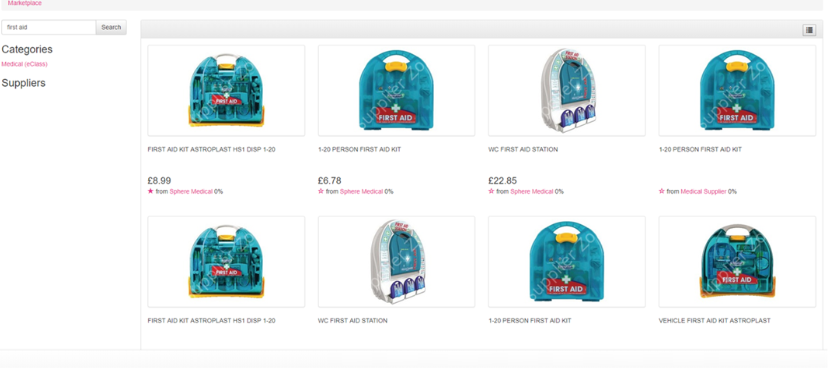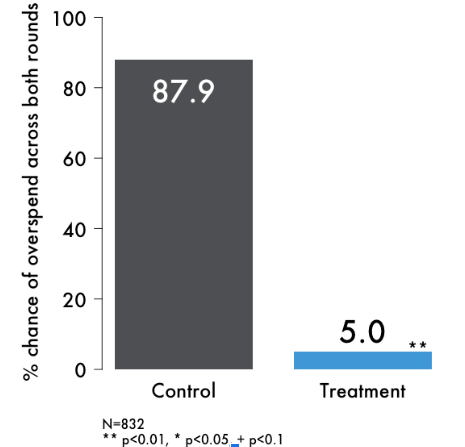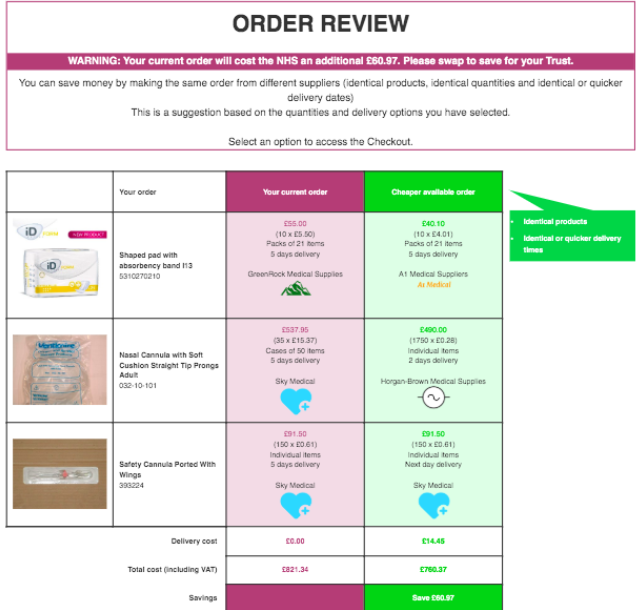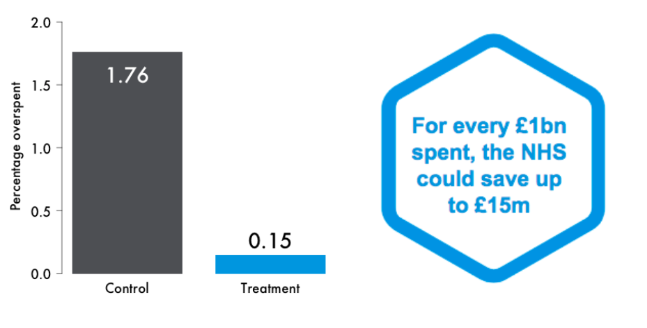One topic that has traditionally evaded public debate or even consciousness is that of hospital procurement. However, as with so many other aspects of life, this trend has been turned on its head in light of the COVID-19 pandemic. Hospital procurement, a topic once confined to a handful of NHS experts, has now risen to national prominence with millions of citizens following updates on the procurement of vital resources needed to help the NHS combat COVID-19. We, at BIT, can now share the results of a trial we ran last year to improve an NHS procurement platform and the efficiency of the healthcare system in the UK.
Imagine that you work in a busy NHS Trust – it’s your responsibility to make sure the hospital is stocked with all the supplies needed to run.
Throughout a week, you jot down what is needed and by when and then log in to the online procurement platform to make the order. You search for surgical gloves and the system displays five options; identical products from different suppliers. Supplier A is the top result on the search list at £1.50 for a box of 50 … but Supplier B asks for £1.70 a box of 60. Which one is the best value? You repeat this process 10 times for various products but when you’re ready to check out, you notice a couple of products are only available with expensive next-day delivery. Do you have a headache yet?
Figure 1. Illustration of a new NHS procurement portal

That is what procurement is like in the NHS, when using the most innovative digital platforms. This rich experience of a proper digital marketplace can be challenging as it requires complex deliberation and mental arithmetic to find the best product. But as we know from behavioural sciences, our cognitive resources are finite and when under strain, the quality of our decision-making quickly declines. So the question for us was, how can we use behavioural insights to simplify choice on these platforms?
That said, the certain complexity of choice comes from an over-correction – as the new platforms represent a significant improvement on the usual standards for NHS requisitioners, unimaginable for most customers. Requisitioners are purchasing with a blindfold, as many old platforms lack the offer of a range of products by suppliers with different prices, lack rich descriptions to properly assess product quality and fail to provide relevant information on delivery costs. The bill for this is high – up to £700 million could be saved in the NHS every year if procurement practices were improved.
A new behavioural procurement platform
We wanted to see whether changes to the choice architecture of new digital procurement platforms could simplify the choice and hence lead to savings. Using our online experimental tool Predictiv, we created and tested two procurement platforms. One simulated the Edge for Health service, a procurement platform developed by Virtualstock and which is set to be rolled out across 60+ NHS Trusts. The second platform incorporated a number of behavioural solutions and targeted the issue of complex pricing using a bundled intervention with several nudges across the entire shopping process.
We ran an online RCT to test whether our behaviourally-informed platform design could help people choose the cheapest products. Almost 1,000 NHS staff completed a hypothetical shopping exercise on either the Edge for Health platform (control) or the behaviourally-informed procurement platform (treatment).
Participants were asked to buy 10 typical products, choosing from identical items from a range of fictitious suppliers. We then compared the value of their final baskets to the cheapest possible order to quantify how much they overspent. We were interested to see whether participants could find the cheapest available options in a world with multiple suppliers offering identical options for different prices. We’re conscious that in the real world people would consider not only the price but also assumptions about quality and previous experience with suppliers.
People shopping with the BI platform were much more likely to find the cheapest possible order
We found that our behaviourally-informed procurement platform reduced the chance of overspend by a whopping 94 percent compared to the current platform meaning that treatment participants were much more likely to find the cheapest basket of products presented to them.
Figure 2. Percentage chance of overspend for correct orders across both rounds

We found that the bulk of this effect actually came from one single nudge – a suggested ‘order swap’ just before checkout. This was a tailored suggestion for people to swap their order for the cheapest possible basket of the same goods, calculated by an algorithm. Whilst earlier prompts flagged cheaper offers per item, they did not account for the specific quantities or possible combinations of goods – which is why they could lead people to overspend. The key takeaway here is that to find the cheapest overall basket is a task of such computational complexity that only a machine can manage – but a sophisticated analytical prompt can massively help requisitioners to make the best choice.
Figure 3. Illustration of ‘order swap’

The impact
In our trial, participants in the control group overspent by £62,000. In the treatment group, overspend was only £5,000. This means that our behavioural platform helped to generate approximately 1.6% savings in this trial.
Figure 4. Treatment impact on savings

For NHS hospital procurement, we estimate that this would amount to savings of up to £15 million for every £1 billion spent, if the effect of the same magnitude was realised. Given the current market share of Virtualstock’s platform, this intervention could help save up to around £50 million per year, should the new design be rolled out. However, it should be noted that the effect size may be smaller or larger if our intervention was implemented in the real world, given the limitations of external validity of online testing.
Overall, our results show that important savings can come from applying behavioural insights and predictive analytics to digital procurement platforms. This suggests that procurement platforms – in healthcare and beyond – should be designed in ways that recognise the complexity of decision-making environment and limitations of human cognition so as to enable consumers to make the most optimal purchases.
Coming next
Having looked at how we can support NHS requisitioners, we are now moving on to explore the behaviour of buyers whose role it is, among other things, to negotiate contracts with NHS suppliers.
This work was funded by an award from the Health Foundation’s Behavioural Insights Research Programme.







